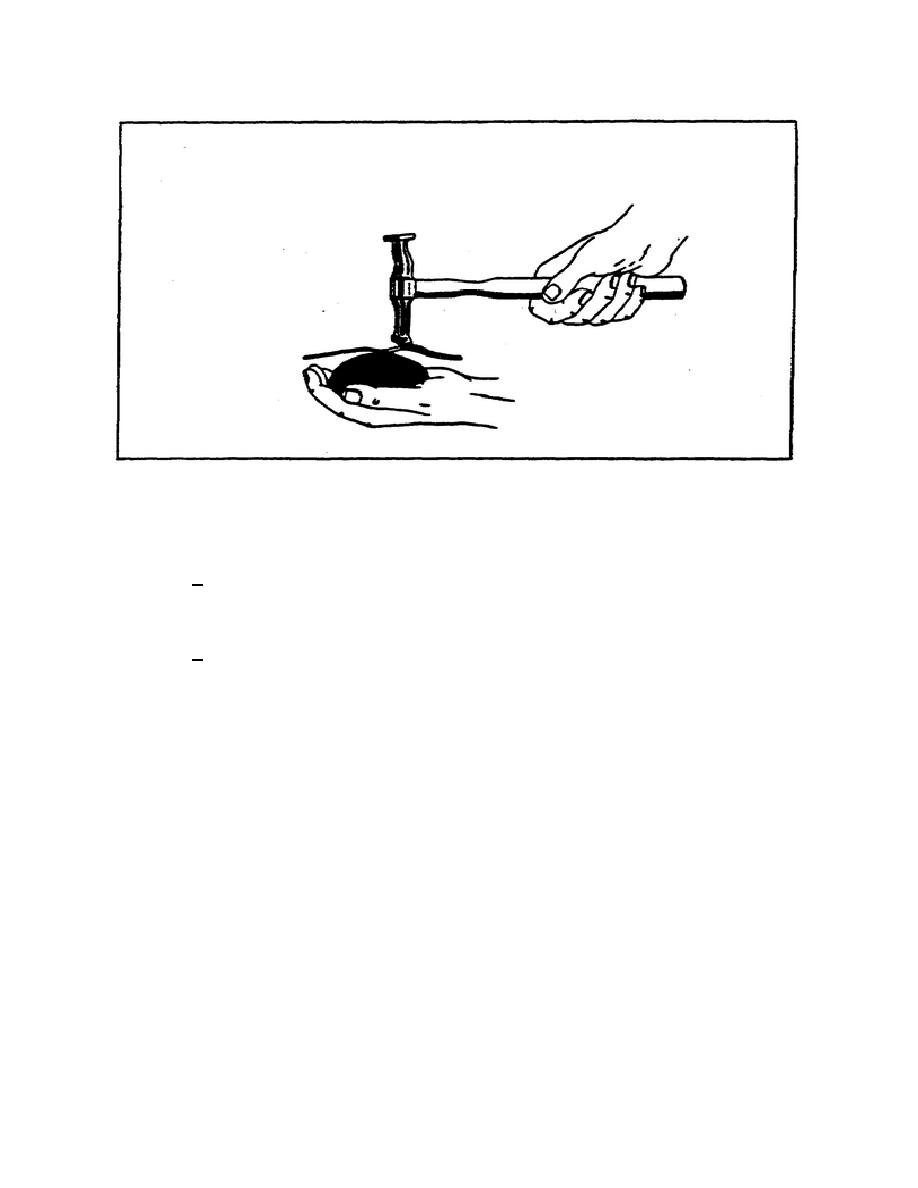
METAL BODY REPAIR - OD1653 - LESSON 1/TASK 1
FIGURE 27.
POSITION OF THE DOLLY WHEN
INDIRECT HAMMERING.
the metal at the low spot, and to strike a series of light blows around the
outer creases.
(c) The corrective action is as follows:
1 A light blow will not displace the surrounding undamaged area,
but the force of the blow will be transferred to the dolly block.
In
effect, this pushes the bent portion downward and straightens it.
2 As a result of receiving the hammer blow indirectly, the dolly
block will be pushed away from the low part of the damage.
However, it
impacts a light push upward on this area. Knocked away from the fender, the
workman's hand will automatically bring it back in place, imparting a second
light blow to the area. As work progresses, using light hammer blows around
the outer edge of the damage, the center of the damaged area slowly rises
until the original contour is restored.
(3) Spring Hammering.
(a) When a crown is formed in metal, it becomes strong and resists
any change to its shape.
It can be compared to an arch used in the
construction of a building or bridge. The strength of this arch or crown
can, in many instances, be used to support the surface being hammered
without the use of a dolly. This is called spring hammering.
38




 Previous Page
Previous Page
